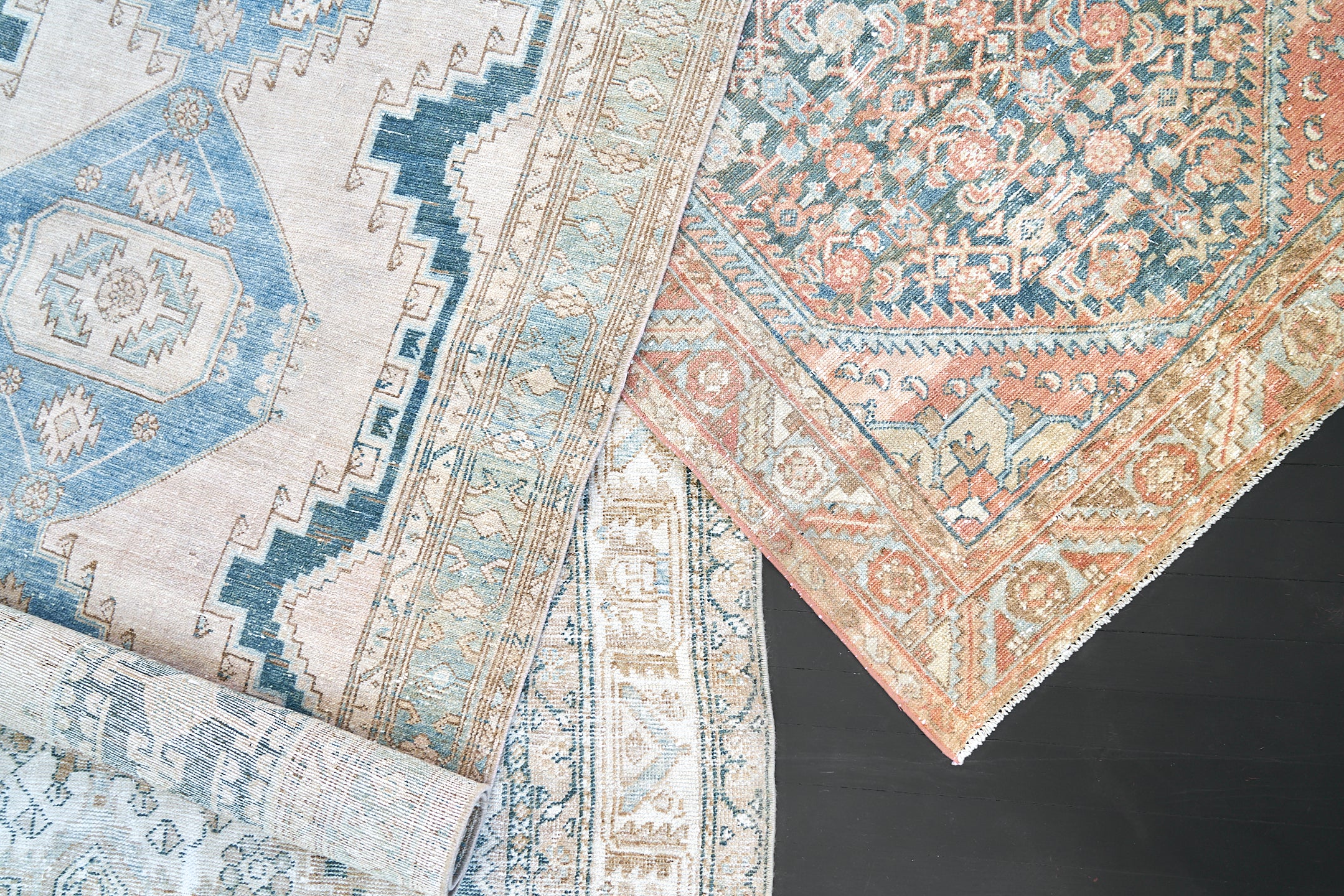JOURNAL
December 11, 2020
Loom Lesson: Types of Knots and Why They Matter

Rugs are incredibly special. When you start to dig into how traditional rugs are made, it’s easy to want to learn more because the process is so involved. You’ll often hear terms like “hand-knotted” or “wool-on-cotton,” and without understanding the basics, the terminology can become confusing pretty fast. That’s one reason I love sharing Loom Lessons – to help you understand what the terms mean, why they’re important, and how they impact the rugs that adorn your home.

As coveted as vintage and antique rugs are, it’s important to understand why they’re so special. For us at District Loom, learning about the history of rugs and how that tradition has carried into the modern era is a way of showing respect for that history and for the people who made them.
Today’s Loom Lesson is about the types of knots you find in rugs, but before we can dig into knots, I’d like to share a little bit of carpet history.
Humans first made rugs thousands of years ago. The oldest knotted rug found by archaeologists was woven around 464 B.C., but evidence of rugs dates back even farther than that – to 6000 B.C. How wild is that?! For context, the Roman Empire existed from 27 B.C. – 476 A.D.; Cleopatra lived from about 69 B.C. – 30 B.C. Basically, rugs have been around for a very long time, and the artisan tradition runs deep.
The process by which rugs are traditionally made is, as you might expect, labor-intensive. It’s also a little bit complicated to describe using words. We’ll define some of the terms here, and you can also watch the video below from UNESCO that depicts the artisan carpet weaving process in Iran.
The warp is a fiber attached to a loom, running lengthwise, and is usually made from cotton or wool. The weft is a fiber woven across the warp, and can also be made from wool or cotton. The weft flows around the warp in an over-under pattern, creating a tight structure that won’t easily come unraveled.
The pile of a rug is what you see, unless the rug is a flat-weave, in which case there is no pile. (See, I told you it gets complicated!) In many traditional Turkish and Persian rugs, the pile is usually made from wool, but you’ll also encounter mohair, camel hair, goat hair, cow hair, silk, or a combination of several of those fibers. In the rugs we sell at District Loom, the pile is made up of hundreds of thousands of knots that are tied across the warp and secured by the weft. Like I said, labor intensive! When the weaver finishes the rug, they may create fringe by leaving the warp thread long. Looking at the fringe is the fastest way to identify what fiber your rug's warp is made from.
Now, you’ll often hear rugs described as Persian, Turkish, or Chinese. In reality though, artisan weavers aren’t necessarily confined to those countries (or in the case of Persia, modern-day Iran). Similarly, knots are also often referred to as Persian (Senneh, or asymmetrical) or Turkish (Ghiordes, or symmetrical), but that’s somewhat of a misnomer, too; just because a village is located in Turkey doesn’t mean they’re using a Ghiordes knot.

In the illustrations below, take a look at the way the knots are tied. An actual human looped a piece of fiber across the warp, cut the fiber with a knife, finished a row of knots across the warp, wove the weft in (or maybe created a double weft!), beat the whole row down with a metal comb, and then continued to make hundreds of thousands more of the same knot in alternating colors until it created the gorgeous motifs we all fawn over. Pretty mind-blowing, isn’t it?
Ghiordes, or symmetrical knot. Also called a Turkish knot. (Credit: Wikimedia Commons)

Senneh, or asymmetrical knot. Also called a Persian knot. (Credit: Wikimedia Commons)

A Ghiordes knot isn’t inherently better than a Senneh knot, or vice versa. They’re just different. One of the biggest reasons to understand what kind of knot was used is that it can give some indication about where the rug was made.
To identify the type of knot used on your rug, you can try gently pulling aside the pile from the front (the side that's usually face up) and see if you're able to identify how the knot is wrapped around the warp. It might be a little bit difficult to see though, because quality rugs are usually woven with a pretty dense weave – those knots are tight.
Now, I know I just said knot type is a not-so-hard-and-fast identifier, but paired with the pile motif, it can give a hint. Think of it sort of like finding vintage brand markers or looking at the joints on a dresser drawer to determine what method was used to make it.
What do you want to learn about in our next Loom Lesson? Let us know in the comments, or send us a dm on Instagram!
